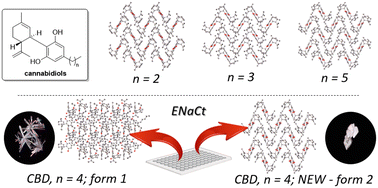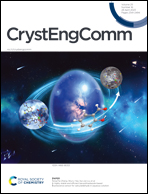Polymorph prediction through observed structural isomorphism leading to a new crystalline form of cannabidiol†
Abstract
Cannabidiol (CBD) is a naturally occurring phytocannabinoid, approved for use in the US and other countries for the treatment of seizures associated with Dravet syndrome, Lennox–Gastaut syndrome and tuberous sclerosis complex, and is commonly isolated and used in its well-known stable crystalline form (form 1). We present a study of the crystal structures of an homologous series of CBD analogues, containing variations in the alkyl sidechain at C-5′, which shows that CBD form 1 is an unusual structural outlier. CBD C-5′ homologues display homologous isomorphism, existing as isomorphic variants in the solid state, whereas CBD form 1 shows notably different crystal packing, suggesting the potential existence of a previously uncharacterized isomorphic CBD polymorph. This predicted isomorphic CBD polymorph (form 2) was subsequently discovered through the use of high throughput crystallisation techniques (ENaCt) in combination with CBD homologue seeding, with single crystal X-ray diffraction analysis demonstrating its fit within the larger isomorphic series. This work represents the first example of directed polymorph discovery using high throughput ENaCt techniques.



 Please wait while we load your content...
Please wait while we load your content...